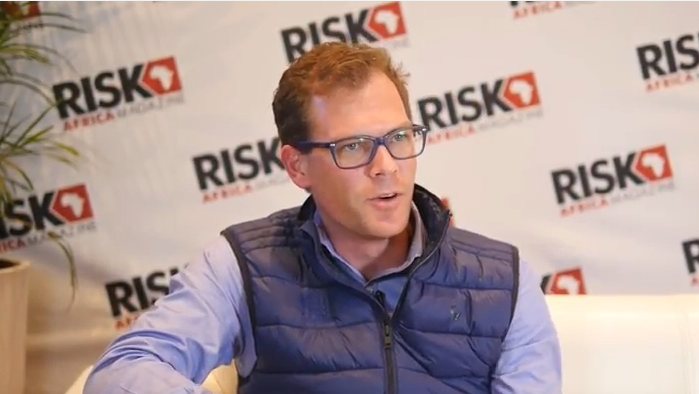
Embrace the mess to achieve success
Vaughan Jones, CEO of the Fulcrum Group, presented on the topic Flying in the Face of Adversity at the FIA Roadshows in 2016. Here’s an excerpt from his talk:
There’s nothing like a bit of adversity to sort the winners from the losers. Present a group of people with a chaotic mess and watch what happens. Most will run away. Two or three will poke around and decide it’s probably not worth the effort. There may even be someone who makes a half-hearted attempt to get something going, but with no major success stories to tell.
Every once in a while, however, you’ll find someone with the ideas, foresight and determination to spot the opportunities in the chaos, call in the right people and deliver results beyond your wildest imagination. A number of examples spring to mind.
Tickling the ivories
In 1975, at just 17 years old, Vera Brandes was the youngest ever concert promoter in Germany. Using all her charms, she had arranged for a late-night jazz concert to be held in the Cologne Opera House. The featured performer was American musician Keith Jarrett, who would entertain some 1 400 people at this unprecedented event.
Or would he?
When Jarrett sat down at the piano on the afternoon of the concert, he was less than impressed. The high notes sounded tinny because the felt had worn away. The black notes were sticky, the white notes were out of tune, the pedals didn’t work and the instrument was far too small for the size of the room. As it turns out, the opera house had sent the wrong piano. Jarrett’s producer told Brandes that Jarrett would not be playing that night unless she got another piano. Jarrett went and sat in his car.
Brandes jumped on the phone immediately. Try as she may, she couldn’t organise another piano in the short space of time she had. She got hold of a piano tuner, though, who was able to make a few improvements. But the piano was the piano.
And so Brandes resorted to the last weapon in her arsenal. She went outside and begged Jarrett to change his mind. As the story goes, it was raining, which conjures up an image of a dishevelled young girl, drenched and bedraggled, pleading with the musician to reconsider. That image, it is said, is what led him to take pity on the organiser and agree to do the concert after all.
It was a full house. As soon as Jarrett started playing it was obvious that something magical was happening. Although the piano had been tuned, the black notes were still sticky and the high notes were still tinny. Plus there was the issue of volume. And so Jarrett avoided the black notes and infused his playing with lots of rumbling bass – partly to avoid the upper register notes, but also to try and play to the back of the room. His antics were spectacular – standing, twisting, pounding, doing whatever he could to create the volume he needed. And the audience loved it! It was hailed as “electrifying”, and the recording of the Cologne concert became the best-selling jazz piano album in history.
Jarrett’s initial instinct was to pull out of the concert – and he was wrong. Yes, he had been handed a mess, but with a lot of persuasion from Brandes he had eventually capitulated and agreed to take on the mess. And thank goodness he did!
Font of wisdom
Have you ever received an email or tried to read a menu in a restaurant where the font is so ornate and curly that you have to figure it out letter by letter rather than being able to read whole words? This phenomenon is called disfluency, and it was used in an experiment by cognitive psychologist David Oppenheimer to prove what has since become known as “the educational benefit of ugly fonts”. In an experiment among high school students, Oppenheimer arranged with teachers to reformat the fonts in some of their class hand-outs. Half the students got their hand-outs in easy-to-read fonts like Helvetica or Times New Roman, while others’ were printed in more challenging fonts to read, like Haettenschweiler or Comic Sans Italic.
Interestingly, the kids whose hand-outs were in the more obscure fonts did better in their exams because, Oppenheimer postulated, they had to work a bit harder to interpret the text.
That’s life
When Nathan Gordon retired as a credit manager with Advanced Laundries in the 1950s, he was earning about R250 per month. His pension netted him R28 per month. His son, Donald, was appalled by the situation and so, in 1957, Donny Gordon immersed himself in bringing a long-held dream to reality: the creation of a new life insurer to challenge the existing players.
He needed to raise around £50 000 (R100 000 at the time) which proved exceptionally difficult. He eventually sourced about 90% and was granted a licence. On 22 August 1958 Liberty Life was registered as a life insurer and sold its first policy on 1 October the same year. By here is the kicker… by the time he retired as chairman and sold out in 1999, the company was valued at over R40 billion. He then went on to co-found one of the biggest life insurers in the UK, Abbey Life Insurance. In the meantime, in 1980, he had founded Liberty International, a shopping centre and commercial real estate business and the third-largest property company in the UK.
I am sure there are literally thousands of anecdotes that contribute to a very colourful and charismatic character. But what we need to understand is that he built this company in the height of the apartheid era – a good portion of which saw South Africa having to cope with internationally imposed sanctions. But again, even in this period Donny Gordon and a group of trusted friends and colleagues saw the opportunity and built an incredible business which has benefited many South Africans.
Embrace the mess
Although our challenges are different today, they can still be onerous. Think about the what’s going on in our industry – SAM, RDR, Basel and Twin Peaks. Then there’s the political environment, both here and abroad – our parastatals and Chapter 9 institutions, the US elections, Britain’s exit from the EU and the rise of IS and terrorism. There’s the refugee crisis, increasing urbanisation, unemployment, poverty, a disenfranchised youth; our credit rating, volatile markets, exchange rates; technology, resources… the list is endless. This is the chaos that we all face. And still we survive. Even thrive. Because out of this chaos and adversity comes lateral thinking, creativity, determination and smart partnerships. Those who make it come out stronger.
There is massive potential right here in Africa. The continent’s total GDP is currently around $3 trillion. It is home to 60% of the world’s uncultivated arable land. It is enormously rich in natural resources. Its population of approximately 1.2 billion is expected to grow to 4 billion by the end of the century. The question is, can anyone afford ignore this continent, warts and all?
I am a fan of a little bit of adversity, a little bit of mess, because this inevitably creates opportunity. So don’t be afraid to play the unplayable piano or read the unreadable menu. Slow down, think more and embrace the mess. If you get it right, you’ll be able to write your own stories in the future. Preferably in Times New Roman.






